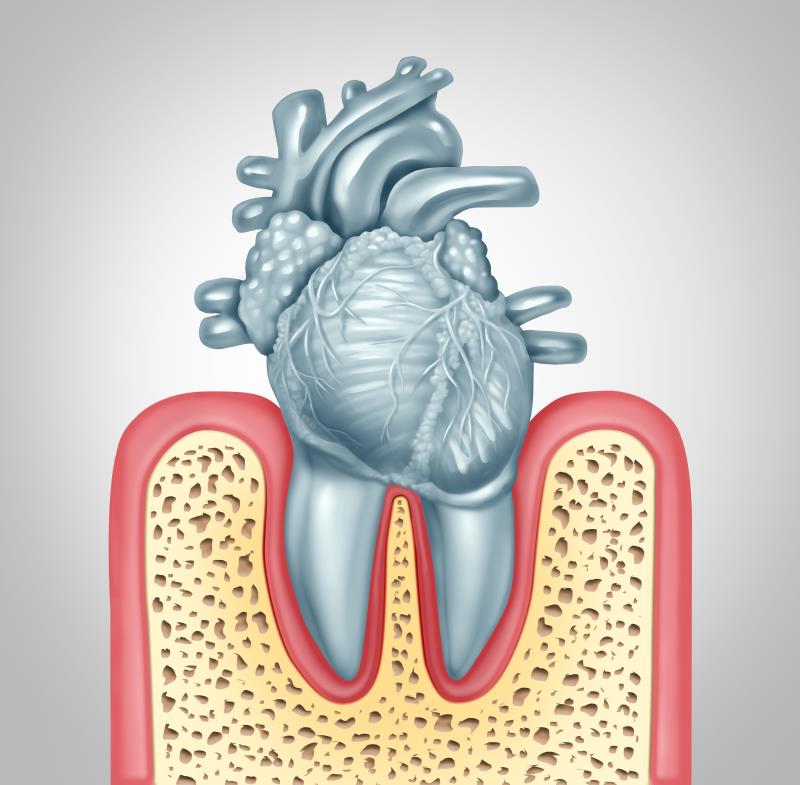
A comprehensive review and meta-analysis confirms the linear association between periodontal disease (PD) and hypertension.
“[Our study raised] an important question regarding the causal nature of the association between PD and hypertension … We observed a positive linear relationship, with the hazard of high BP rising as gum disease became more severe,” said study lead author Dr Eva Muñoz-Aguilera from the University College London (UCL) Eastman Dental Institute in London, UK.
Of the 81 studies included, cross-sectional and case-control studies revealed a 22-percent higher risk of hypertension in individuals with moderate-to-severe PD (odds ratio [OR], 1.22, 95 percent confidence interval [CI], 1.10–1.35; p=0.0001), more so among those with severe PD (OR, 1.49, 95 percent CI, 1.09–2.50; p=0.01). [Cardiovasc Res 2019;doi:10.1093/cvr/cvz201]
Moreover, individuals with PD had higher mean systolic blood pressure (SBP, weighted mean difference [WMD], 4.49 mm Hg, 95 percent CI, 2.88–6.11) and diastolic BP (DBP, 2.03 mm Hg, 95 percent CI, 1.25–2.81; p<0.00001 for both) than those without PD.
“These differences are not negligible … An average of 5 mm Hg BP rise would be linked to a 25 percent increased risk of death from heart attack or stroke,” underscored Muñoz-Aguilera.
Scale away
Five of the interventional studies included in the review reflected a drop in BP following periodontal therapy (eg, supra- and subgingival scaling and root planing) – ranging from 3 to 12.5 mm Hg (SBP) and from 0 to 10 mm Hg (DBP) – suggesting the positive impact of periodontal therapy on managing hypertension.
However, these remain inconclusive, hence the need for randomized trials to substantiate the impact of PD management on BP, said co-author Professor Francesco D’Aiuto, also from UCL Eastman Dental Institute. Larger studies with longer follow-ups may help ascertain the role of periodontal therapy as a new nonpharmacologic alternative in managing hypertension. [Lancet 2016;387:957-967]
Modifiable risk factor?
Long-term studies are exploring the possibility of whether PD can be a novel modifiable risk factor for hypertension in the same degree as diabetes and smoking. [Curr Atheroscler Rep 2012;14:160-166; Vasc Med 2016;21:422-428] However, as these conditions share common risk factors (eg, ageing, poor socioeconomic status), residual confounding might influence the magnitude of these associations, the researchers pointed out.
"It is important to [indicate] that this association could also be driven by an association between arterial BP changes and other undetected sources/chronic infections. Further research in identifying the interplay between triggers/bacterial burdens in each individual and their relative contribution on BP is [thus warranted],” they said.
Although the study evaluated gum disease as a potential risk factor for hypertension, the reverse could also be true, underscored D’Aiuto. “[It is important] to examine whether patients with high BP have a raised likelihood of gum disease. It seems prudent to provide oral health advice to those with hypertension … [Conversely, individuals] with gum disease should [also] be informed of their [potential hypertension] risk and given advice on lifestyle changes to prevent high BP such as exercise and a healthy diet.”
Taken together, this review suggests that oral health evaluation and management not only addresses oral health but may also be of relevance in cardiovascular management, said the researchers.